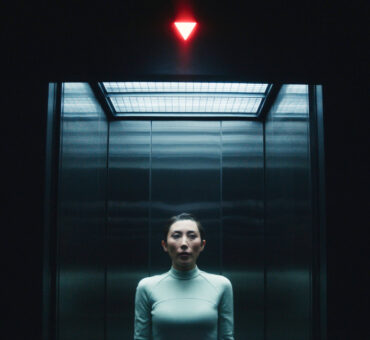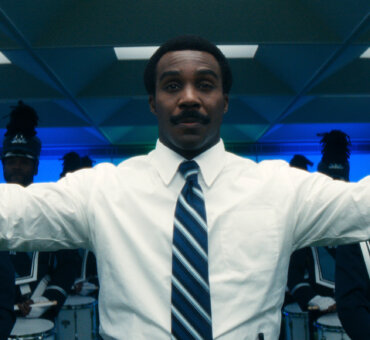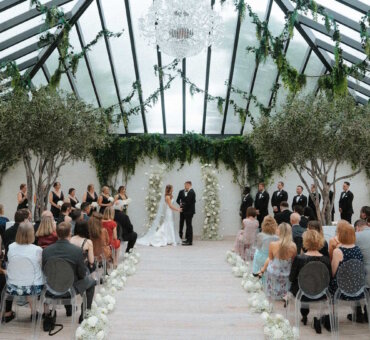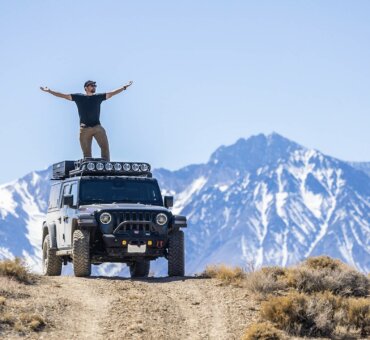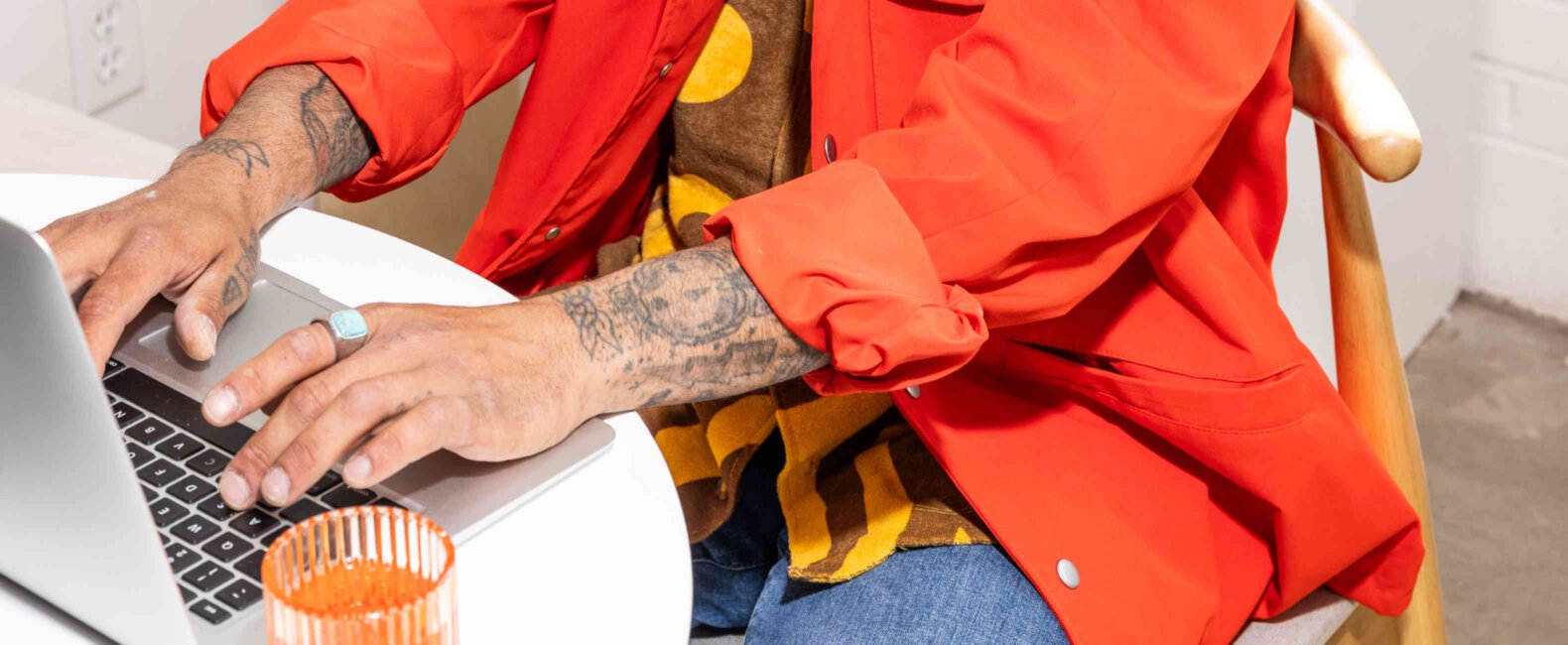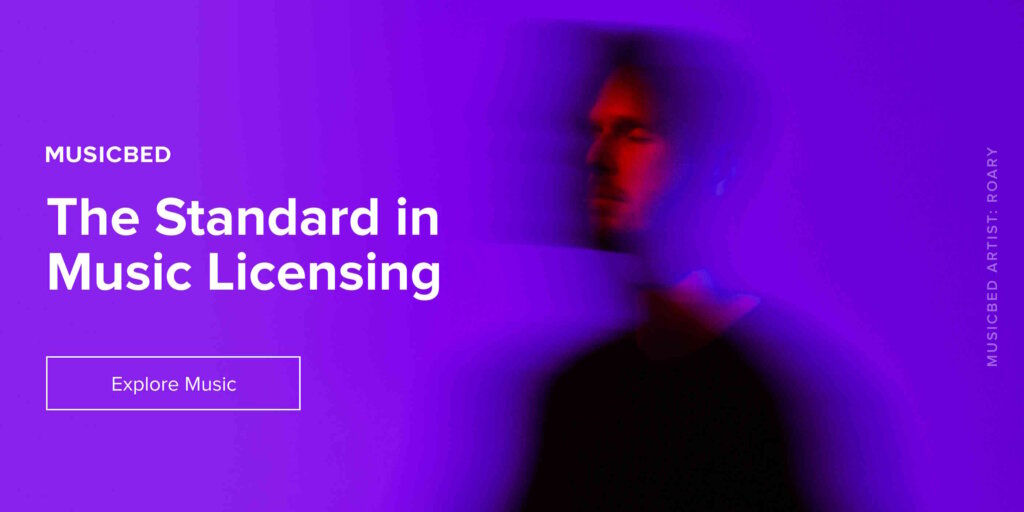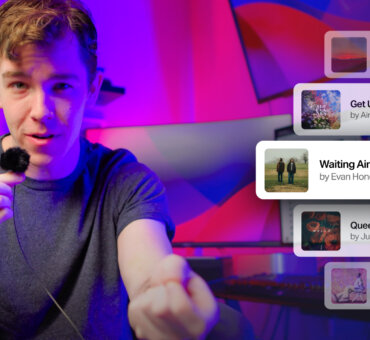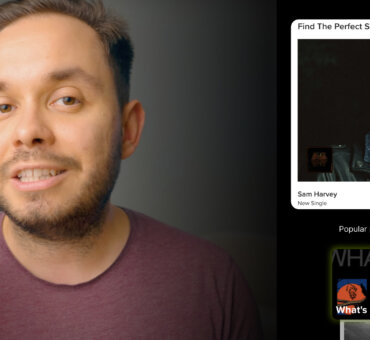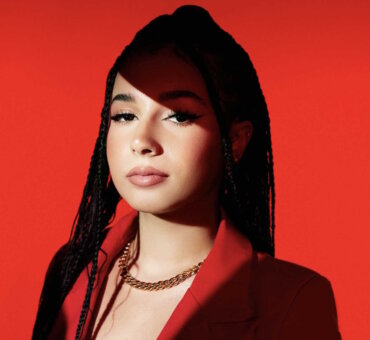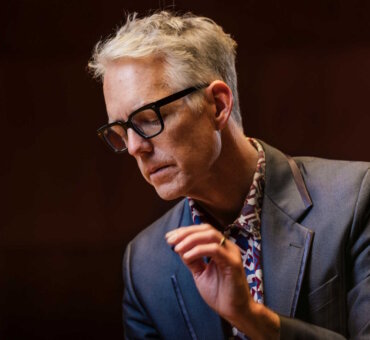As a filmmaker and creative, chances are you’re aware of music licensing as a concept…but do you understand music licensing? For filmmakers, really understanding and navigating the world of music licensing is essential to ensure that their projects are legally sound, creatively enriched and ethically produced.
Licensing gives you creative control, allowing you to use specific music that enhances your project’s emotional and narrative impact. Knowing the costs involved in music licensing can help with budgeting and avoiding unexpected expenses, while proper licensing ensures that the project can be distributed across various platforms without legal hurdles.
Most importantly, using music without proper licensing can lead to legal consequences, including fines and lawsuits. It’s also essential to respect the rights of musicians and composers by compensating them for their work and supporting the creative industry as a whole.
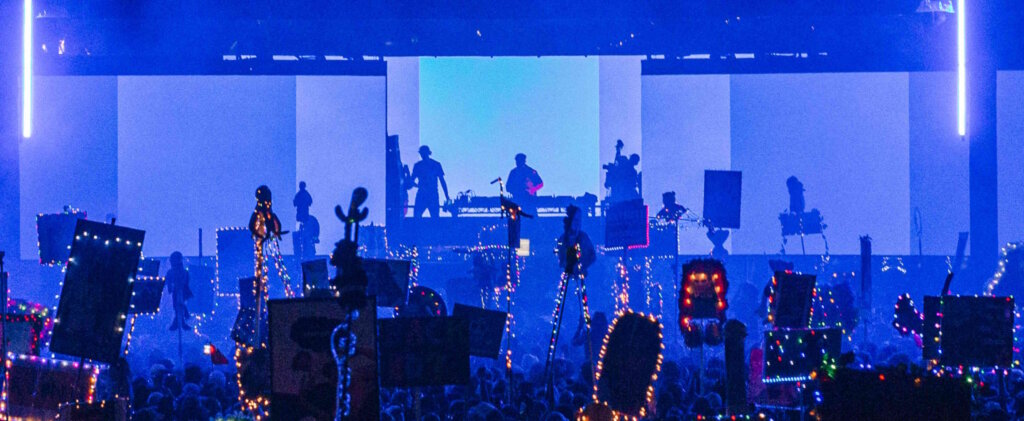
The different types of music licenses
Below, let’s take a look at the various types of music licenses in detail.
Synchronization license
A Synchronization License (commonly referred to as a Sync License) grants the licensee the right to synchronize music with visual media. This type of license is essential when music is used in conjunction with visual elements such as films, television shows, commercials, video games and online videos. This synchronization can involve background scores, theme songs, opening and closing credits, montages and more.
This type of license covers the composition (lyrics and music) rather than the specific recording of the song, which would require a separate Master Use License if the original recording is used (more on that later).
Sync licenses can be quite specific regarding the duration for which the music will be used and the geographic territory in which the content will be distributed. This can be for a limited period or perpetually, and it can cover local, national or international use.
A sync license is typically obtained from the music publisher, who holds the rights to the song’s composition. The terms of the sync license, including fees, are usually negotiated based on the popularity of the song, the type of media project, its reach and the importance of the music within the project. These fees can vary widely, from a few hundred dollars for independent or low-budget projects to millions for high-profile films and commercials.
Examples of a sync license
Chances are you encounter sync licensing every day. Throughout the hit television series The Bear, there are songs being used in every single episode…that’s a lot of sync licensing. Take the opening intro of season one, episode seven, for example:
In this scenario, the production company will have obtained a sync license for the song, allowing it to be used in this episode, broadcasted on TV, and made available on streaming services. Alongside TV, sync licensing can also be found across the spectrum of films, commercials, video games and online videos.
Master license
A Master Use License grants permission to use a specific recording of a song, known as the master recording. This type of license is kind of like the other half of a sync license, covering the underlying composition (lyrics and melody) rather than the recording itself.
The primary purpose of a Master License is to allow the licensee to use a specific sound recording of a song. This can include using the recording in films, TV shows, commercials, video games, and other multimedia projects. The master license is typically obtained from the record label or the entity that owns the recording rights. This could also be the artist themselves if they own the rights to their recordings.
A master license should specify the duration for which the recording can be used and the geographic territory where it can be distributed. This can range from a single country to worldwide use and from a limited time to perpetuity. Some master licenses may be exclusive, meaning that only the licensee has the right to use the recording within a specified context or period. Non-exclusive licenses, on the other hand, allow multiple licensees to use the same recording.
The terms of a master license, including the fees, are usually negotiated based on the recording’s popularity, the type of project, the reach of the project, and how prominently the recording will be used. Fees can vary widely and are often higher than those for sync licenses because they involve the actual performance by the artist.
Examples of a master license
An example of a master license in use can be seen throughout the Netflix documentary Trainwreck: Woodstock ‘99. In this documentary, there are a number of specific live performances of a song being performed by famous artists, so master licenses would’ve been needed for these.
If any documentary, TV series or film features a popular recording of a song, they’ll need a master license. The same goes for advertising – if a well-known song performed by a famous band features in a commercial, that needs a master license.
Mechanical license
A Mechanical License grants permission to reproduce and distribute a musical composition in physical and digital formats. This type of license is primarily concerned with the reproduction of a song’s composition (lyrics and melody) and applies to various formats, including physical media (CDs, vinyl records) and digital formats (downloads, streams). Mechanical licenses will also specify the duration and territory for which the license is valid, which could cover specific regions and a set time period.
The mechanical license is usually obtained from the music publisher or a rights organization that represents the songwriters and composers. These types of licenses involve the payment of royalties to the rights holders. These royalties tend to be calculated based on the number of copies sold or the number of streams.
In some jurisdictions, like the United States, there is a provision for a compulsory mechanical license, which means that once a song has been released to the public, anyone else can cover it by paying a set statutory rate. This ensures that songwriters and publishers receive fair compensation while allowing artists to create cover versions of songs. Meanwhile, the mechanical royalty rates are regulated by the Copyright Royalty Board.
Examples of a mechanical license
In 2006, UK rock band Arctic Monkeys covered Barbara Lewis’ 1965 classic “Baby I’m Yours”. To get this on the B-side of their album Leave Before the Lights Come On, the band will have needed to obtain a mechanical license from the music publisher, allowing them to legally reproduce and distribute the song on CDs and vinyl records. They then pay mechanical royalties based on the number of albums sold.
Mechanical licenses also cover digital downloads, where an independent artist releases a cover of a popular song on a digital platform like iTunes, or Spotify. Mechanical licenses will also be obtained if a music streaming service such as iTunes or Spotify wants to add a new album containing cover songs to its catalog. Meanwhile, if a company produces karaoke versions of popular songs for use in karaoke bars and home systems, that will also require a mechanical license.
Public Performance License
A Public Performance License grants permission to publicly perform a musical composition or recording. This license is essential for venues, broadcasters and other entities that play music in public settings, ensuring that songwriters, composers, and performers are compensated for the public use of their work.
A public performance license covers live performances, recorded music, and broadcasts. The license is typically obtained from performance rights organizations (PROs) such as ASCAP, BMI, or SESAC in the United States. These organizations represent songwriters, composers and music publishers, managing the licensing process on their behalf. A public performance license will specify the duration and geographic territory for which they’re valid. They can be short-term (for a single event) or long-term (annual licenses for ongoing use).
The fees for this type of license will vary based on factors such as the type of venue, the size of the audience and the frequency of music use. These fees are collected by PROs and then distributed as royalties to the rights holders.
Examples of a public performance license
The most obvious example of a public performance license in use would be radio stations. In order to legally broadcast the music, a radio station such as those run by the BBC (British Broadcasting Corporation), will secure public performance licenses from PROs. The station pays licensing fees based on its audience size and frequency of music play and the fees are distributed as royalties to the rights holders.
If a music festival wants to feature multiple bands performing live, they’ll need to obtain public performance licenses from PROs to legally allow the live performances to go ahead. The licenses cover the entire event and ensure that songwriters and composers are compensated for the public performance of their work. Meanwhile, if any bar, restaurant, gym, fitness center, supermarket wants to play music – wherever it is in a public setting – then they’ll need to secure a public performance license from a PRO to legally use that music.

Print Rights License
A Print Rights License grants permission to reproduce and distribute the sheet music or printed lyrics of a musical composition. This type of license is essential for anyone who wants to legally print and sell sheet music, songbooks and lyric compilations, ensuring that composers and lyricists are compensated for the use of their work.
Print rights licenses cover the creation and distribution of printed materials that include musical compositions. This can include traditional sheet music, digital sheet music, printed lyrics, instructional books, and arrangements for different instruments. The license is typically obtained from the music publisher who holds the rights to the composition. In some cases, the composer or songwriter may directly grant the license if they control their own publishing rights.
The fees for a print rights license vary based on factors such as the number of copies to be printed, the type of publication and the distribution method. The licensee pays these fees to the rights holder, who then distributes royalties to the composers and lyricists.
Print rights licenses will also specify the duration and geographic territory for which they are valid. These licenses can be granted for a single print run, a specific period, or in perpetuity, and they can cover local, national, or international distribution.
Examples of a print rights license
Sheet music and educational materials are the most common usage when it comes to a print rights license. For example, if a publisher wants to release a collection of piano sheet music for popular songs, that publisher obtains print rights licenses from the music publishers of each song in the collection. This allows them to legally print and sell the sheet music to customers.
If a music teacher creates an instructional book for guitar students that includes popular songs and exercises, then the teacher needs to secure print rights licenses to include the songs in the instructional book. This ensures that the composers and lyricists are compensated for the use of their works in an educational context.
Other examples may include choir and band arrangements, digital sheet music platforms offering downloads of sheet music, and lyric book compilations.
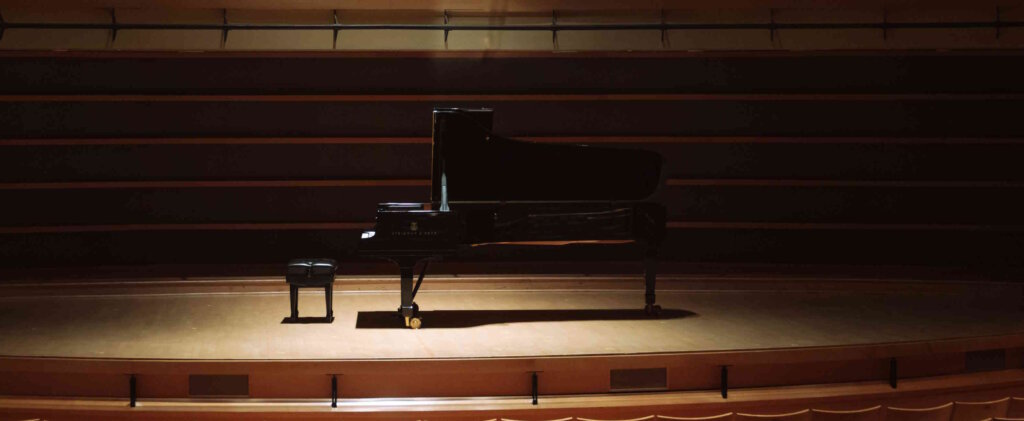
Theatrical License
As the name suggests, a Theatrical License grants permission to perform a play, musical, or other dramatic work in a live theater setting. This type of license is essential for schools, community theaters, professional theater companies and other organizations that wish to stage a performance of a copyrighted work. It ensures that the playwright, composer, lyricist and other rights holders are compensated for the use of their work.
The primary purpose of a Theatrical License is to allow the licensee to legally perform a copyrighted dramatic work in front of a live audience. This includes full-scale productions, readings and adaptations. The license is typically obtained from the playwright or the licensing agency that represents the rights to the work. For musicals, this includes rights from both the book writer and the composer/lyricist.
Theatrical licenses will cover various aspects of live performances, including the number of performances, ticket sales and sometimes specific restrictions on how the play or musical can be presented. Some licenses may also cover the use of the script, music and other elements of the production.
The fees for a theatrical license vary based on factors such as the popularity of the work, the size and type of the venue, the number of performances and whether the production is amateur or professional. Typically, royalties would be calculated as a percentage of the box office receipts, or a flat fee per performance.
Theatrical licenses specify the duration for which the performances are authorized and the geographic territory where the performances can take place. These licenses can be for a single performance, a limited run, or an extended engagement.
Examples of a theatrical license
How many of you reading this have been to watch a performance at the theater? If so, then chances are you’ve seen a theatrical license in action. In order to perform The Lion King Musical, the production will have needed to obtain the necessary theatrical licenses.
From large scale professional theater productions to community theaters and even schools and colleges, a theatrical license will most likely be needed in order to perform the music and dramatic works and sell tickets to the public for those performances.
Musicbed’s Licensing Options
With the above in mind, you can now get to grips with what we offer here at Musicbed. Musicbed grants a sync and master license, which allows music to be used in timed relation to moving pictures (defined as a slideshow, video or a film). All of the music that we license is pre-cleared in terms of Master and Publishing.
Musicbed provides three main types of subscription: individual, business and enterprise.
Individual subscription
The individual subscription is ideal for content creators. It covers any video being uploaded to the internet (YouTube, being the obvious candidate here), social media accounts up to 1m followers and podcasts. You’ll also have the freedom to monetize all of your content. While individual subscriptions don’t come with coverage for client work, it can be added if freelancers or content creators do work for clients.
Business subscription
The business subscription is great for businesses, brands, and nonprofit organizations. In this subscription you get everything that the individual tier includes, as well as being covered for client and brand work, which includes clients who have up to 250 employees.
Enterprise subscription
The enterprise subscription is best suited for large-scale brands and corporations. The comprehensive coverage provided in this subscription includes social media accounts with more than 1m followers, allows for clients of any size, celebrities with 1m or more followers and a range of distribution channels including broadcast, cinema and film festivals, VOD and video games. Unlike individual and business subscriptions, with an enterprise subscription we have what we call “extended uses”, which means we’ll work with you to customize the subscription based on your specific needs.
Single song licensing
We recognise that not everyone wants or needs a subscription. In some cases, you need one or two songs for a very specific project. That’s why we also offer single song licensing. A single use license means the song can only be used once – one song synced to one edit of one video, one time. This can be a much more cost effective way to do things for a one-off project. For example, if you’re on an individual subscription that doesn’t cover a larger client, it can prove much cheaper to opt for single song licensing, rather than upgrading your whole subscription.
Additional services
Alongside our subscription tiers and single song licensing, Musicbed can also take care of your custom music needs. With a roster of over 1,000 artists, we can work with you and a musician every step of the way, helping to create a custom music track for your project – one that fits exactly how you envisioned it. Additionally, if you’d like to obtain music licensing for a popular song, our experts are on hand to help with that too. No song is out of reach!
Wrapping up
Hopefully, at this point of reading you now have a much better understanding of the various types of music licenses out there. It can be a daunting subject but once you start learning the ropes, it’s clear that each type of license has a very different, specific usage.
Understanding the world of music licensing is essential for any filmmaker and creative – it protects you from any legal issues, it empowers you as the creative and most importantly, it assists the creative industry as a whole, ensuring musicians and artists are correctly compensated and acknowledged for their work.
When you join Musicbed, you’re gaining access to over 50,000 songs that are ready for use in your creative projects, as well as a team of dedicated professionals who can assist with navigating this world every step of the way.
























